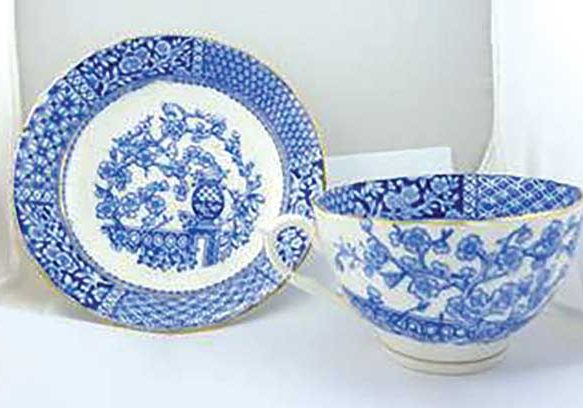
Antiques Expert: Allan values Mrs Skilton’s antique cups and saucers
by Allan Blackburn
Dear Allan,
I wondered if you could please help to identify my antique cups and saucers, they do not have a maker’s mark and I have tried to find out about them but have had no luck so far.
I brought these four antique cups and saucers from England in 1966. They are glazed all over. The glaze is clear and has minute bubbles all through it, with some small dark bits stuck in it. Two saucers have larger bits of brown coloured earthen ware and are totally covered by glaze and one has a black bit set in the glaze.
The cups and saucers are translucent to light, light in weight and thin and the cup handles are made separately and stuck on.
I’d be grateful to find out anything about them.
Yours,
Mrs Skilton, New Zealand
Thank you for sending in your photos. I’ve been in antiques for 30 years and most of the time when I’m valuing items, I can give a fairly accurate valuation from a photo or a good description. Sometimes I prefer to talk to the person face to face and to hold and touch the
items, which can make the valuation process a bit easier.
However, there are the occasional times when I really am stumped and your letter has had me scratching my head this week.
I would love to be able to tell you that I could instantly recognise the maker and that it was from one of the top quality potteries, but unfortunately the opposite is true. The first thing we look at when valuing something is the makers mark (usually found on the bottom of each piece). Yours doesn’t have a mark of any kind and straight away that tells me a few things.
The first is that your pieces cannot be of a very high quality. Any maker or manufacturer worth their salt placed their mark on a piece. Household names like Spode, Worcester and Minton all had their products marked.
Due to the pattern (I’ll come to this later) I think your items were made in about 1870. About this time, only the big players marked their wares, so if a tea service like this was made at this time but not marked, then you can deduce it is not of good quality.
In 1890 a law was passed that all products must bear a maker’s mark. This was to protect the better manufacturers from being copied by the poorer ones. It also protected the customer so they knew what they were buying and were reassured that when they were paying for quality – they got quality.
Wind forward a few more years and by 1920 the makers mark had to include their country of origin, so this makes valuing things even easier.
So as a general rule of thumb: If the piece was any good – it would have had a maker’s mark.
Now to the pattern. As many as 70 companies were making these blue and white sets at this time (1870’s). They were English variations on a Chinese theme and were very popular.
The pattern is printed on and it hasn’t been done well. There are big gaps in the pattern, especially between the cup and handle. This would suggest that it’s a decorating company we are looking for and not the maker of the porcelain itself.
There are two clues here that alert me to the fact that it’s a cheap transfer print. You said there is bubbling on the glaze. Straight away this tells me that the pot has been in the kiln twice. Once to glaze the white pottery and once more to seal the transfer or print. Bubbling occurs on pots that have been fired to very high temperatures, twice. Also the black specs you mention are common on twice fired products. Water collects between the layers leaving behind black specs and brown water marks.
Often sets like this were bought as white pottery and the company just decorated them with the blue and white pattern.
Porcelain manufacturers that actually made the item would record each piece that went to market in a library, so if you had time, you could go back and trace every last piece. However, companies who just solely decorated other peoples’ work didn’t keep a library as they were making bulk quantities to order.
So how do we put a value on it?
Well, all the factors I’ve mentioned obviously affect the value dramatically. We’ve discovered that they’ve been produced by a decorating company, it’s an incomplete set with some chipped and stained pieces and bubbling has occurred in the glaze. Therefore I could only value them at a few pounds. You’d be lucky to get over £50 for the set.
What they lack in monetary value, they make up for in historical value. This is a great example of what manufacturing was like in the early Victorian era.
I’m sorry it’s not better news. But thank you for sending them in – it was nice to blow the dust off my old reference books and take on the challenge!






